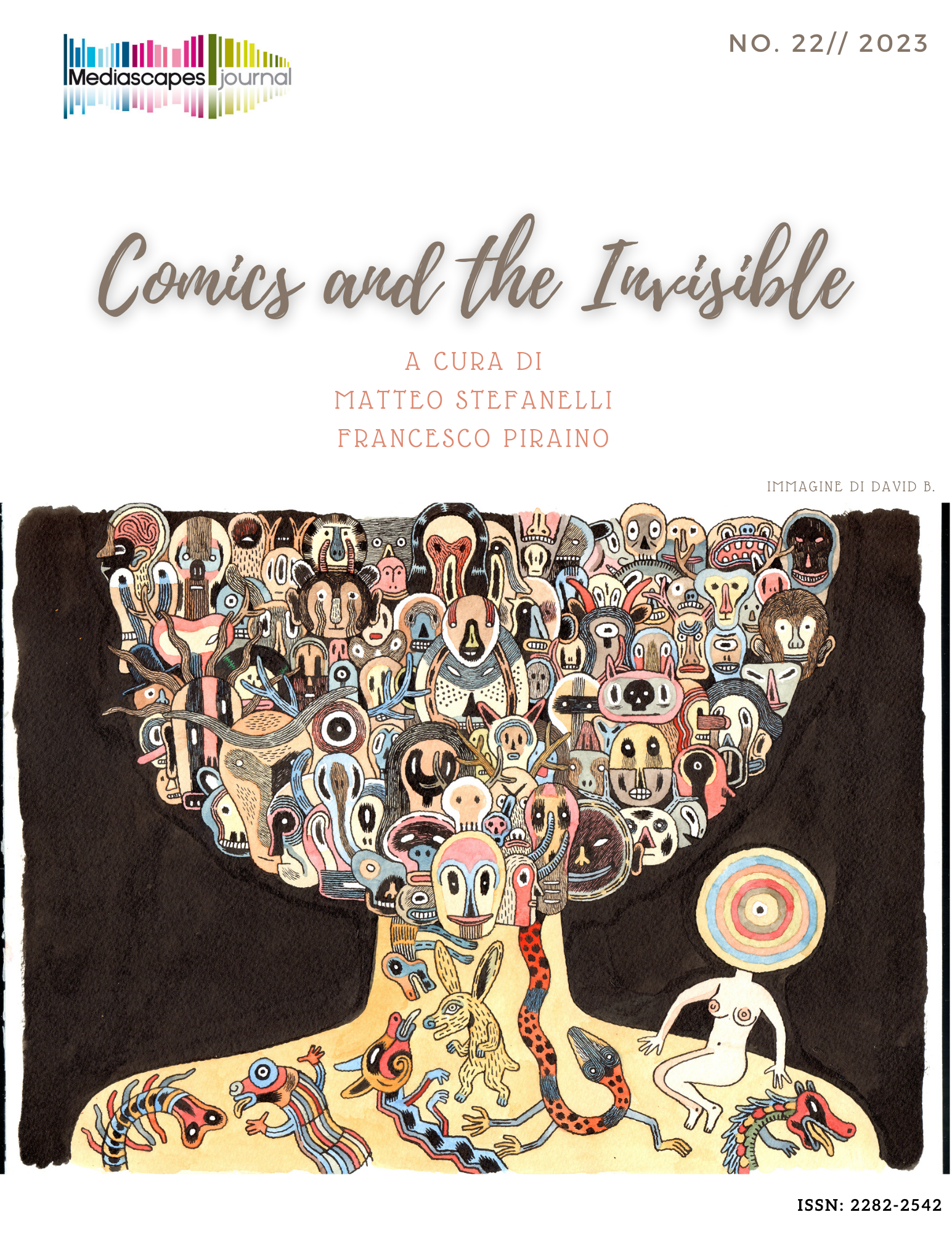Dancing with the (un)seen
Problematizing the viewer’s gaze through Mediterraneo’s visual aesthetics
Keywords:
Migration, Mediterraneo, Viewing, Gaze, AestheticsAbstract
Since the 1990s, international migration has become one of the most pressing socio-political issues in Italy. Subsequently, the topic of undocumented immigration has gained increased visibility in Italian society, making the infamous images of incoming masses of migrants ever more frequent in the mainstream media. At the same time, since the turn of the new millennium and thanks to the enhanced diffusion of the graphic novel format, significant changes also occurred in the Italian comics scene at the start of the 21st century. The fumetto di realtà [non-fiction comics] saw a consistent rise in popularity, exemplified by the proliferation of autobiographical comics and graphic reportages focusing attention on both personal experiences and socio-political events. Comics and graphic novels have started addressing the topical events of the present, including the phenomenon of immigration towards Italy from the Mediterranean basin. This study aims at exploring the peculiarities of graphic narratives in portraying experiences of forced migration, by paying particular attention to the specific framing strategies of the medium and the political affordances therein. Through the close reading of the wordless graphic novel Mediterraneo (2018), the present contribution analyzes how the inherent problematization of notions of presence and absence in comics' spatial and visual grammar can constitute a call for the active participation of viewers in the narrative, potentially mobilizing the Rancièrian formulation of spectators’ emancipation that eschews the long-standing association of viewing with inertia.
Downloads
Published
How to Cite
Issue
Section
License

This work is licensed under a Creative Commons Attribution 4.0 International License.
Mediascapes Journal is published under a Creative Commons Attribution Licence 4.0.
With the licence CC-BY, authors retain the copyright, allowing anyone to download, reuse, re-print, modify, distribute and/or copy their contribution. The work must be properly attributed to its author. It should be also mentioned that the work has been first published by the journal Anuac.
Having published these contributions for the first time, Mediascapes Journal will have the right to publish them integrally or partially as reprints or possibly as part of a thematic issue, in both digital and printed format.
It is not necessary to ask further permissions both to author or the journal.


